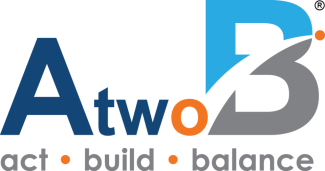F.I.T. Focus – Why Did I Just Have to Pay Taxes – or Get a Lower Refund?
Please click here to read as PDF.
As we reach “Tax Day” on April 15, we’ve generally noticed that tax results for the 2018 tax year have created more confusion than usual. That’s saying something given the immense complexity of the U.S. tax code. The irony of the additional confusion, is that the Tax Act and Jobs Act of 2017 simplified many aspects of the personal income tax return. For example, the expanded standard deduction and child tax credit have eliminated the need for many people to itemize. The infamous Alternative Minimum Tax now ensnares many fewer people. The need to itemize deductions is expected to be reduced by nearly 30 million filers. In theory, this should reduce preparation time and compliance matters and the process should be less confusing.
So why the misperception? We’ve found that the confusion is not the result of the process, but a result of the results. More specifically, we find that the greatest source of the surprise this year is that people are getting a lower refund or owing more money, even if their actual tax liability is lower (unless you live in a high income/high property tax state). For this, we have the magic of the tax “withholding” system to blame.
“Withholding” Judgment
A few weeks after the Tax Act was passed, the IRS withholding tables that impact how much of your paycheck removes for taxes were adjusted. In general, if you had the same tax status and claimed the same number of allowances, the amount of tax withholding that was remitted to the government from your employer was reduced. Good news! Your take-home pay went up as less was going to the government. But the reason you file a tax return the following year is to “true-up” with the government. There are generally only three outcomes of that “true-up” tax filing process:
- If Your Tax Liability on Your Return > Your Withholding or Estimated Payments = You Will Owe Money
- If Your Tax Liability on Your Return Your Withholding or Estimated Payments = You Will Get a Refund
- Your Tax Liability on Your Return is Close to Your Withholding or Estimated Payments = You’re Even Steven
It’s as simple as that. While many people experienced increases in their take-home pay in 2018, what they are now finding is that they are paying that back through more taxes owed or reduced refunds in 2019. That “surprise” has been disappointing to many. In our “judgment”, confusion about withholding was the culprit.
What to Do? It’s Up to You
At the end of the day, your tax liability is what it is – but what you owe or get back is a function of your withholdings and ultimately your preference. We say preference because you generally can engineer the outcome you want if you have a sense for what your liability will be. By adjusting your withholdings, you can choose an approach that results in fewer surprises and the results you want to achieve. We would label these approaches as follows:
- The “Forced Savings” Approach – You know around how much you’ll owe but elect to withhold more in a disciplined bid to save money. You give it to the government, they hold it for you without paying any interest, and give it back after you file your taxes. Result: Tax Refund.
- The “Keep My Money” Approach – The “Keep My Money” approach elects to withhold less than is owed, knowing that it will need to be paid back upon tax filing. The logic here is to keep more of your money, have higher take-home pay, and earn money on the amount that you’ll save in the meantime, instead of giving Uncle Sam a no-interest loan. Result: Taxes will be owed.
- The “Goldilocks” Approach – The “Goldilocks” approach aims to withhold an amount that is “just right”. Enough to cover your projected liability, but not so much that you’ll get a refund. Result: Nothing Much to Do
There is no right or wrong answer, just the one that makes the most sense for your family. If after the 2018 filing season, you would like to adjust, you can fine-tune your withholdings via a Form W-4 from your employer. Of course, if you need help in determining your projected liability by running a tax projection and adjusting your withholdings for 2019, we’re here to help. Taxes can be incredibly confusing, but with a basic understanding of the system and a little guidance, they don’t need to be.
If you have any questions regarding this report, please contact us at info@today2b.com or 914.302.3233
Point B Planning, LLC d/b/a AtwoB | 23 Parkway, 2nd Floor Katonah, NY 10536 | www.today2b.com
Important Disclosure Information
This report is provided as information and commentary regarding the market. The views expressed in this report are as of the date of the report, and are subject to change based on market and other conditions. This report contains certain statements that may be deemed forward-looking statements. Please note that any such statements are not guarantees of any future performance and actual results or developments may differ materially from those projected.
Please note that nothing in this report post should be construed as an offer to sell or the solicitation of an offer to purchase an interest in any security or separate account. Nothing is intended to be, and you should not consider anything to be, investment, accounting, tax or legal advice. If you would like investment, accounting, tax or legal advice, you should consult with your own financial advisors, accountants, or attorneys regarding your individual circumstances and needs. Advice may only be provided by AtwoB after entering into an advisory agreement. Moreover, you should not assume that any discussion or information contained in this newsletter serves as the receipt of, or as a substitute for, personalized investment advice from AtwoB. If you are an AtwoB client, please remember to contact AtwoB, in writing, if there are any changes in your personal/financial situation or investment objectives for the purpose of reviewing/evaluating/revising our previous recommendations and/or services. AtwoB is neither a law firm nor a certified public accounting firm and no portion of the newsletter content should be construed as legal or accounting advice. A copy of the AtwoB’s current written disclosure Brochure discussing our advisory services and fees continues to remain available upon request.

